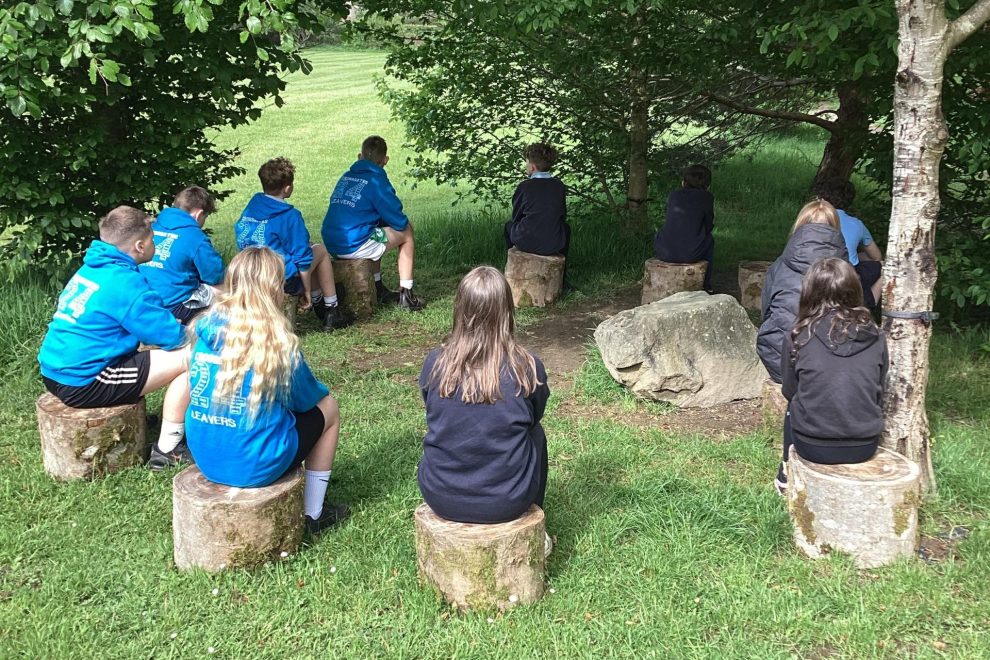DWR CYMRU’S Elan Valley Visitor Centre has recently donated several beech tree rounds to Crossgates School for pupils to use as part of their outdoor learning. These large rounds will be used by the children as seats or tables.
Dŵr Cymru Ranger, Beth Rees, said: “We came up with the idea of donating felled wood on an Outdoor Learning Practitioner training course, when fellow course mate from Crossgates Primary School, mentioned that their existing rounds were rotting and no longer usable. As we were felling beech trees the next day, we thought that while the brash could be left as habitat, we could donate some beech rounds for the children to enjoy.”
Crossgates learners have been enjoying the new space.
One learner, Mia, said: “The log area is good for talking to friends and playing.”
Honor says that the log area is a lovely place to calm down and relax. Lowri agrees, and enjoys “walking round on and acting like their stepping stones.”
The large beech tree was felled alongside other beeches near Dol y Mynach Reservoir, as part of ongoing efforts to preserve the Celtic Rainforests in the Elan Valley. Beech trees, although native to the UK, are not native to Powys. When they fall, beech leaves cover the ground in leaf litter and smother the mosses and lichens growing on the forest floor.
Also, their dense canopy blocks sunlight to lower plants, and only a small number of species that can tolerate high levels of shade can survive. Celtic Rainforest is a very rare habitat, which only exists in mild, damp conditions; often along the Western Seaboard of the UK, these woods thrive in places that receive more than 200 days of rain a year.
A mature Atlantic Sessile Oak, a key species in Celtic Rainforests, can support over 400 species. Aside from felling non-native trees, work to protect the Celtic Rainforests includes controlling invasive species such as bracken and Rhododendron, and halo thinning, the practice of removing smaller saplings and trees beneath a mature tree to reduce competition and increase wildlife such as wood warblers, pied flycatchers and redstart.
















